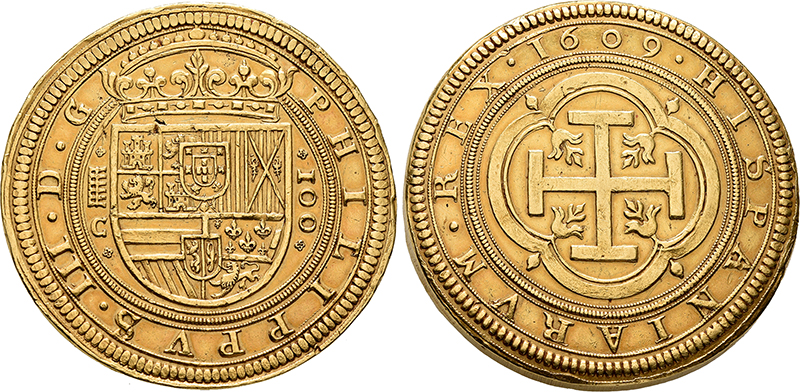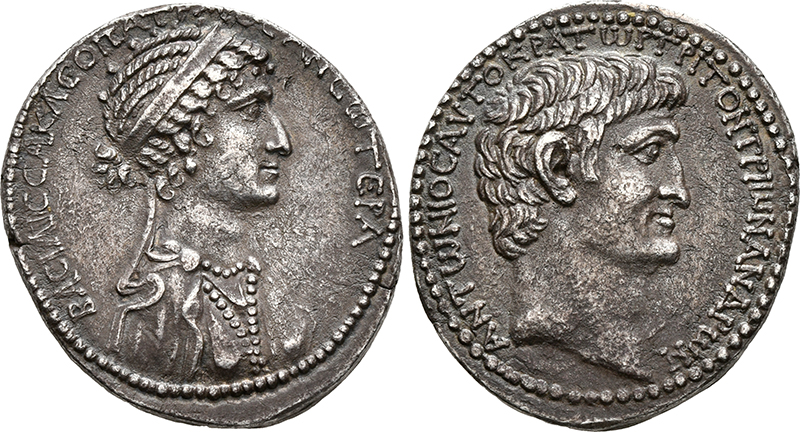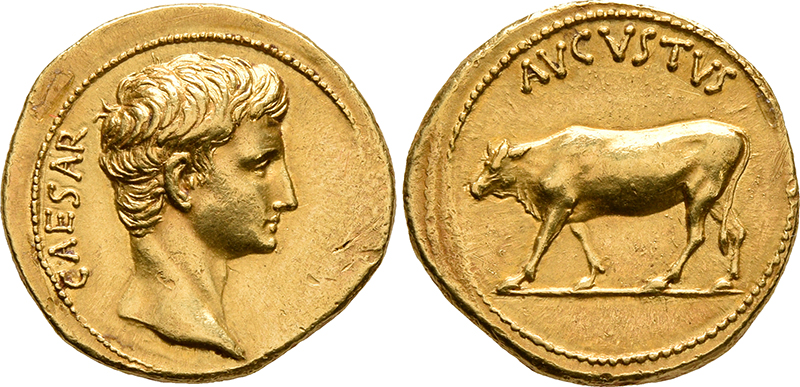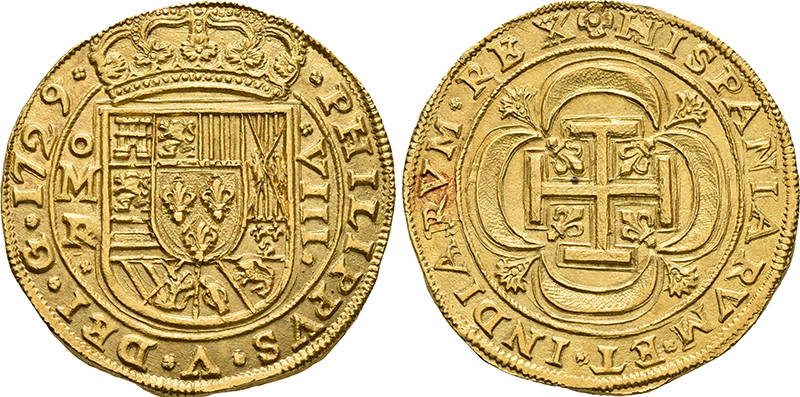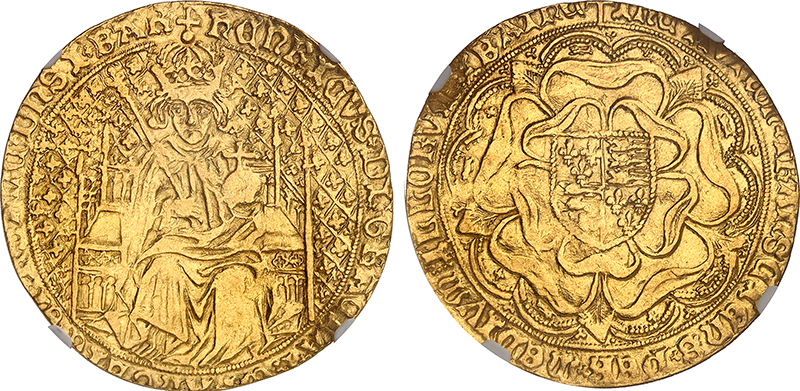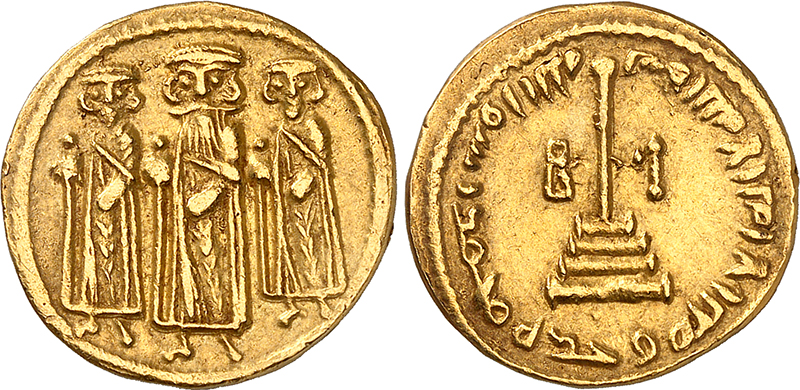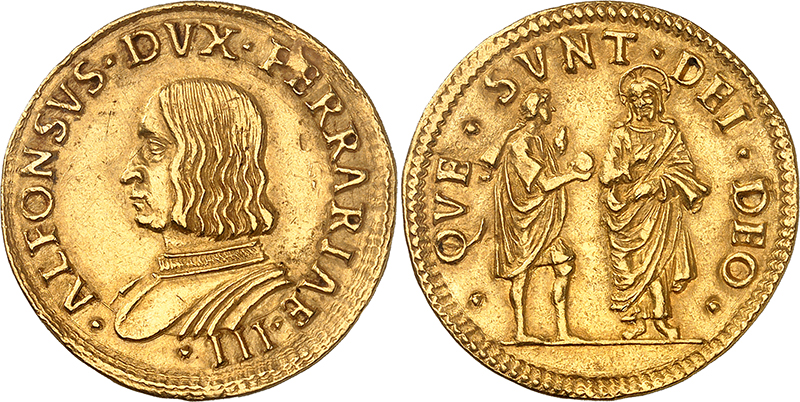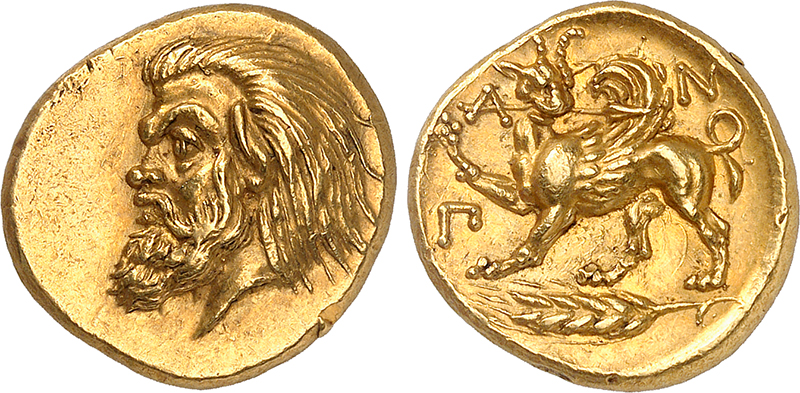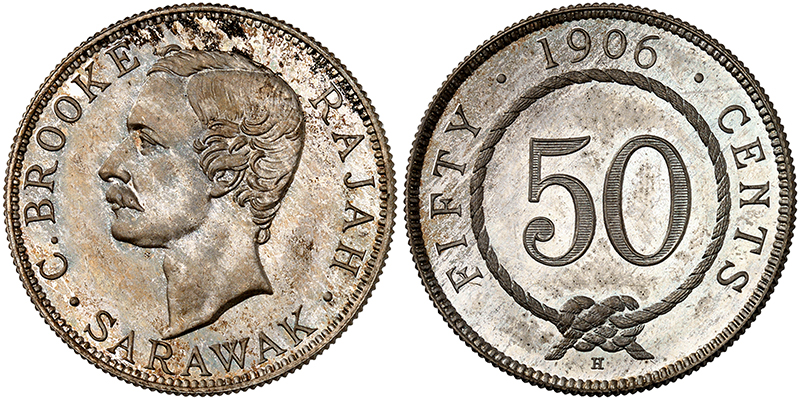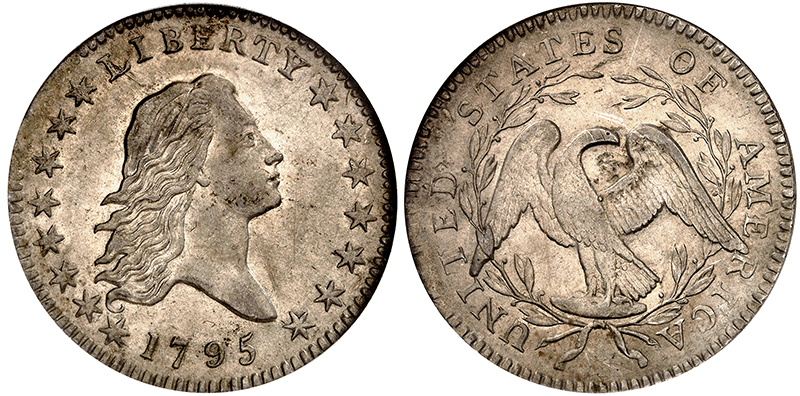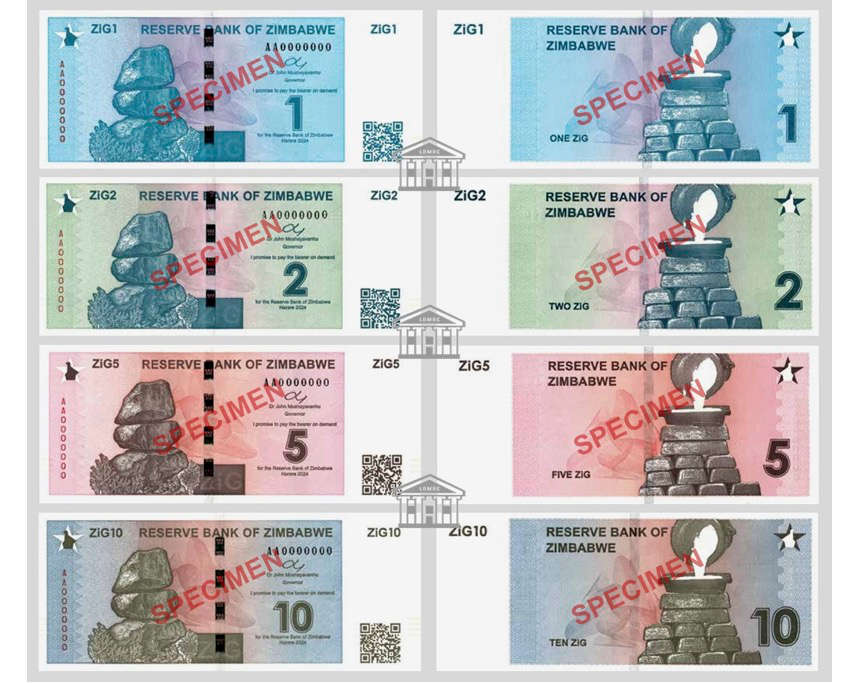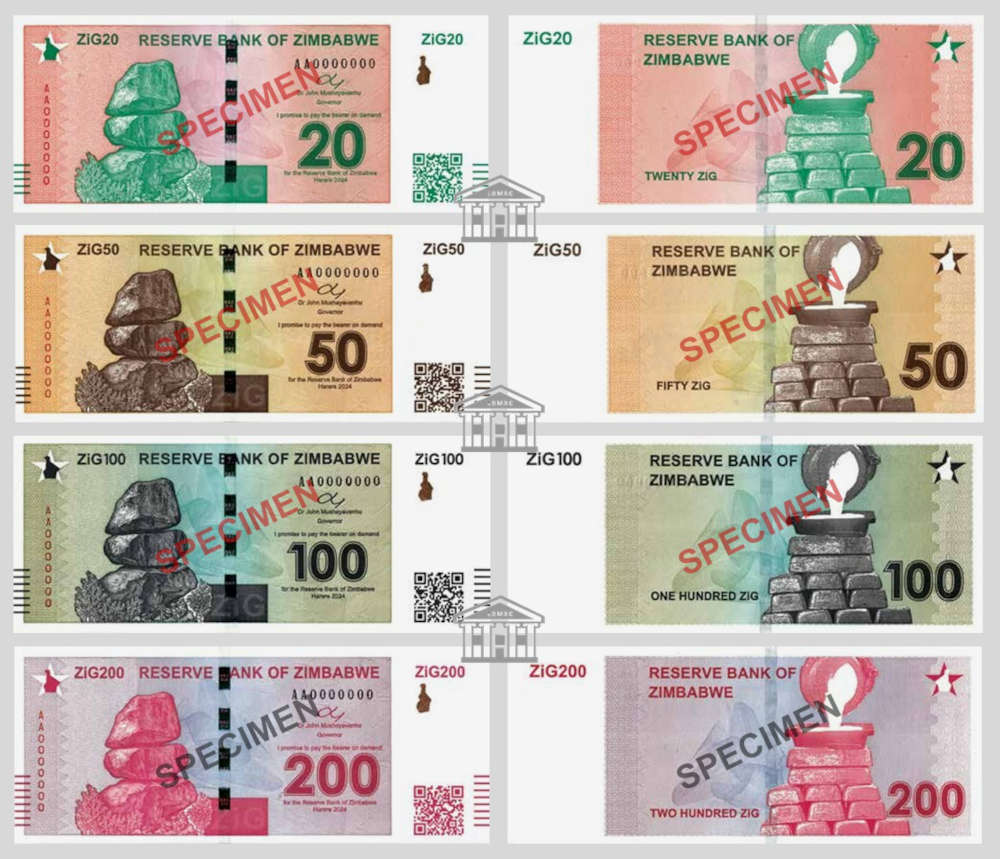Zimbabwe’s New Currency: Is the ZiG Doomed to Fail From the Start?
by Michael Alexander
The decision to replace the country’s beleaguered currency, the Zimbabwe dollar and implement the ZiG currency was taken during the Bank’s Monetary Policy Committee in September 2023. The Reserve Bank advised the country that with effect from the 5th October, the ZiG would become one of the means of payment for domestic transactions, over and above its value-preservation purpose. It was the Reserve Bank of Zimbabwe’s Governor John Mushayavanhu who introduced the new currency, the ZiG or Zimbabwe Gold on the 5th April to the media attending the press conference at the Bank’s headquarters in Harare. During this time, he unveiled the new ZiG banknotes, eight denominations in total from one to two hundred ZiG values.
Mushayavanhu indicated the value of ZiG will be at par with the value of the physical Mosi-oa-Tunya gold bullion coin introduced into the Bullion market in 2022 and the value of the ZiG would fluctuate with the spot price of gold. As such, from the 5th April Zimbabwe’s worthless dollar was thrown onto the scrapheap of former failed national currencies. However, the new currency was also given a rate of exchange listed at ZiG 13.56 equalling one US Dollar, and taking into consideration the spot price of gold in the range of $US 2300, the ZiG stands at over 31,188 units of currency for one ounce.
Soon after Mushayavanhu’s news conference, came the tidal wave of comments on social media, with most Zimbabweans essentially saying this currency replaces nothing in terms of economic stability or a means of a reliable store of wealth. In particular, both economists and financial experts cited the belief that the Reserve Bank likely did not have sufficient reserves to back the currency – touching on the comments by the Governor that the ZiG will be “fully anchored and fully backed” by a basket of reserves comprising foreign currency and precious metals though no ratio was specified. There is also widespread concern that the Reserve Bank prompted by the country’s treasury – which are separate entities, will resume the chronic habit of printing money as required and simply ruin any stability or value the ZiG might afford the Zimbabwean people. Promises have once again been made by the Reserve Bank’s governor that overprinting will not occur ever again and that fiscal restraint will prevail.
Mushayavanhu also outlined the additional plan to issue ZiG coins in the immediate future as a means of convenience. But, concern has already been expressed on social media that by time any of the ZiG coins which are meant to replace the smaller denominations and placed into circulation, they will have far less value than their banknote counterparts have at this time. Currently, 1 ZiG is valued at 7.3 US Cents.
Whether the new ZiG performs sufficiently for Zimbabweans to keep even a small portion of their bank balance in the local currency or if it collapses, the US dollar it seems will remain King in Zimbabwe’s overall economic landscape. The American greenback accounts for 85% of transactions, and remains both the preferred mode of transaction and store of wealth for the vast majority of Zimbabweans. In the event that the ZiG goes the way of all of Zimbabwe’s former currencies issued since 1980, the Reserve Bank have indicated they are committed to the multi-currency structure which to a far lesser extent also includes the South African Rand until at least 2030.
ZiG Banknotes
Of particular interest is the inclusion of a Quick-Response or, QR code which is seen on the obverse or front side located just below the watermark field. When scanned, the QR code provides a link to a webpage of the Reserve Bank to provide information about the daily exchange rate. Key highlights from the MPS presentation outlined the new structured currency is backed by reserves of foreign currencies held at the Reserve Bank as well as reserves of gold bullion on deposit. The currency is also backed by royalties derived from the sale of the country’s gold bullion coin, the Mosi-oa-Tunya which was launched onto the bullion market in 2022. It is believed the banknotes are produced by Fidelity Printers and Refiners – FPR, a Zimbabwean security printing and gold refinery company wholly owned by the Reserve Bank of Zimbabwe and utilising an off-set printing process. The Government and Reserve Bank unveiled the designs, colours, dimensions of the Zimbabwe Gold (ZiG) notes as follows:
| Denomination | Primary Colour | Obverse | Reverse | Watermark | Dimensions | |
| 1 = $US .073 | Blue | Chiremba Balancing Rocks formation | Gold refining and stack of twelve bars | Zimbabwe Bird | 155 mm. / 65 mm. | |
| ZiG 2 | Green | As above | As above | As above | As above | |
| ZiG 5 | Red | As above | As above | As above | As above | |
| 10 = $ US 0.73 | Dark Blue | As above | As above | As above | As above | |
| ZiG 20 | Peach | As above | As above | As above | As above | |
| ZiG 50 | Orange | As above | As above | As above | As above | |
| 100 = $US 7.30 | Olive Green | As above | As above | As above | As above | |
| ZiG 200 | Purple | As above | As above | As above | As above | |
Security features common to all denominations:
- Watermark –The watermark field is located at the right half of all notes, when held up to a source of light, an image of the Zimbabwe bird is visible.
- Security thread – A colour-tinted foil strip which appears segmented and with see-thru micro-text will appear as a solid strip when held up to a source of light.
- Latent image – The application of a tactile, latent image is placed just below the security thread. When tilted under an ordinary source of light, the image of the currencies’ initials ZiG can be seen.
- Aligned Print – Located on each denomination and as viewed from the front side, an image of a star and Zimbabwe bird can be seen near the upper left corner and in perfect alignment to the image on the back side.
- Tactile application – (20 to 200 ZiG) A series of horizontal lines can be felt and seen located on the left and right lower edge of the notes to assist visually impaired persons to identify each denomination.
- Colour-shifting print – (20 to 200 ZiG) Included on the denominations, the outline image of the Zimbabwe bird is seen just above the watermark field which changes colour when viewed under an ordinary source of light.
The Reserve Bank has indicated the new notes shall be issued gradually initially to cater to small transactions and to ensure the availability of change, thus, alleviating the use of local retail vouchers in the economy. Thereafter, all denominations should reach the public as the demand increases. Also planned for issue in the near future are coins which will be denominated in US cents to alleviate the shortage of US coins in circulation.
The author, Michael Alexander, is president of the London Banknote and Monetary Research Centre.







